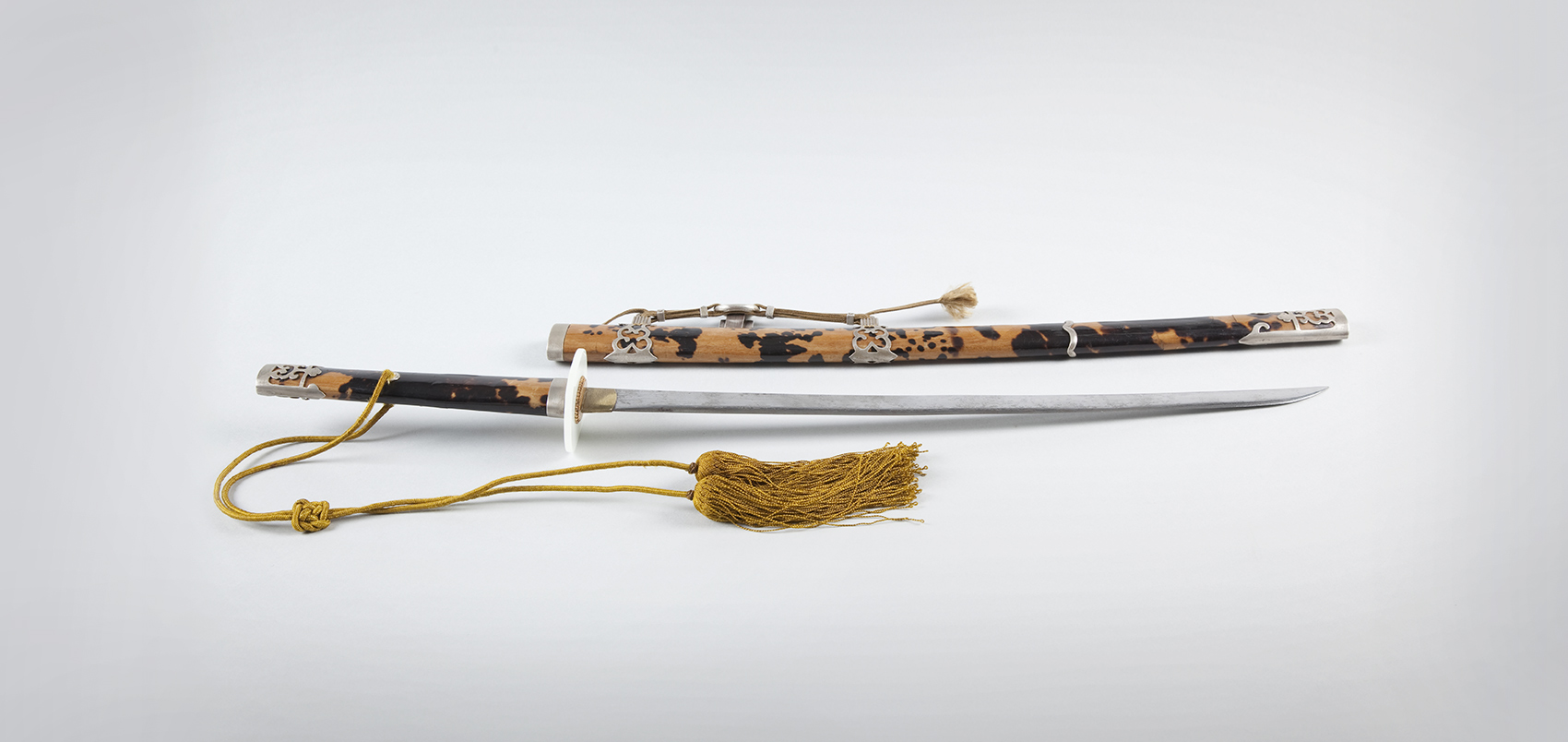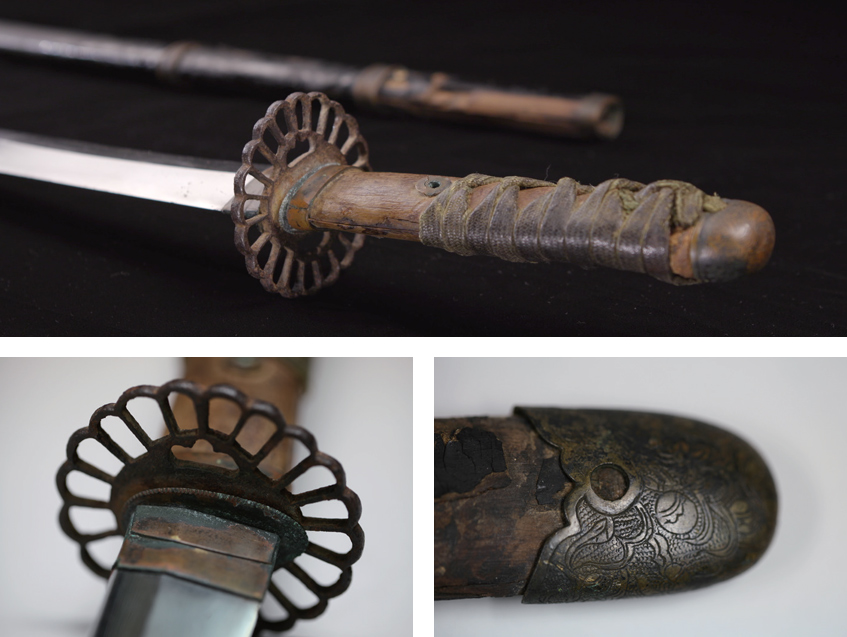
Contents





A Poet Who Sings Love






Hwando
A Practical and Elegant Single Edged Sword
With great technological advances, the world of weapons has evolved far beyond what it used to be. Gone are swords, spears and bows, replaced by guns, artillery, missiles and chemical weapons. This does not mean that traditional weapons were less intelligent or threatening. When life or death depended on a split second of face to face combat, the sword was the optimal design for both attack and defense. The Hwando, a single edged sword of the Joseon era is a key example of a weapon designed for efficiency in battle.
Written by Lee Eun-yi, designer & writer
 Daemobogeom's hilt and sheath are carved from the whole shell of a sea turtle, which allows the blade to show through the sheath. © Suwon Hwaseong Museum
Daemobogeom's hilt and sheath are carved from the whole shell of a sea turtle, which allows the blade to show through the sheath. © Suwon Hwaseong MuseumRediscovery in the Present Day
A traditional sword mainly used in the Joseon era (1392-1910) as a sidearm was called hwando, named for the rings hwan on the sheath that allowed cord to be tied around it. This traditional sword was typically only about 70 cm long, light and gently curved or straight. This was probably because the soldiers had to wear heavy armor and carry their bow, arrows and shield as well, leading to a preference for lighter swords. They held the shield in one hand and hwando in the other, and could easily sheath the sword to grab the bow when needed. During the Japanese invasion of Korea in 1592, the length of the sword became as long as 90 cm, but got shorter again in the late Joseon era.
In 2017, after the Korea-Russia Summit, President Vladimir Putin presented an ancient sword to President Moon Jae-in. The short and simple sword, which measured about 50 cm, was a hwando made in the late Joseon era. The act of returning a weapon to its country of origin has a symbolic meaning deeper than simply gifting a weapon from one’s own country. It is a symbol of trust and faith. This gift led to the rediscovery of the traditional Korean sword.
 Hwando used in The Great Korean Empire, is kept in a good condition. © National Folk Museum of Korea
Hwando used in The Great Korean Empire, is kept in a good condition. © National Folk Museum of Korea Palace guards are wearing hwando tied to their attire and a bow on the top. © shutterstock
Palace guards are wearing hwando tied to their attire and a bow on the top. © shutterstockCombining Practicality and Beauty
Although dramas often show swords worn with the hilt in the front, the sword was typically worn on the waist or side, with the hilt behind the body and the sheath hanging in front. This enabled soldiers for whom the bow and arrow was the main weapon in combat to shoot their arrows without being encumbered by the sheath. As the sword was hanging from a strap, its direction could be changed at will, and the sword drawn quickly from the sheath. It was the most practical weapon design. Forged from steel, the hwando is quite sturdy and does not break easily. The hilt and sheath were reinforced by wrapping them with shark skin or hemp cloth, or by lacquering the wood. Generals who were close aides to the king used orange swords, while ordinary generals and warriors had black swords. Swords were sometimes decorated with gold, silver or jade to emphasize their artistic value. A key example of such a work of art is daemobogeom, which is in the collection of the Suwon Hwaseong Museum. Its hilt and sheath are carved from the whole shell of a sea turtle, which allows the blade to show through the sheath, and are decorated with all kinds of precious materials, making it one of the most artistically valuable hwando swords.
 The hilt was made with wood and crossed leather preventing the sword from slipping.(Top)
The hilt was made with wood and crossed leather preventing the sword from slipping.(Top)General Gwak Jae-u used cross-guard made to protect his hands.(Left), Edge of the scabbard is finished with metal and it lasts undamaged till now.(Right)
© Uibyeong (Citizen Militia) Museum
Other Articles





A Poet Who Sings Love





Application of subscription
Sign upReaders’ Comments
GoThe event winners
Go


 December 2018
December 2018


